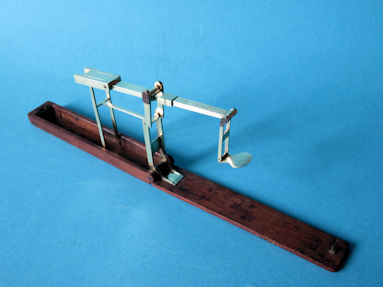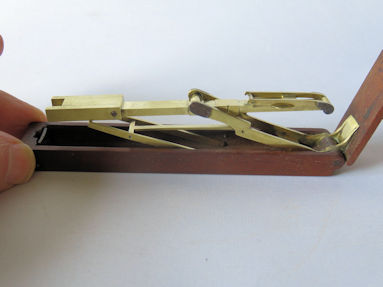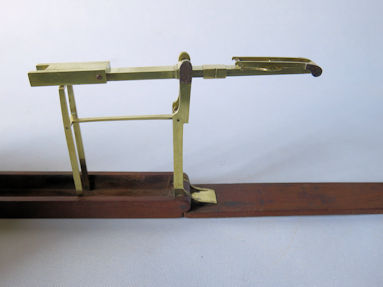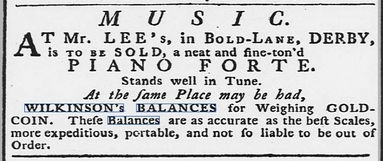This folding and semi-automatically rising into position of use coin scale was most likely made by Anthony Wilkinson from England. Wilkinson lived from 1736 to 1803. He began making coin balances in 1772. He lived in Kirkby from 1776 to 1785, then in Ormskirk from 1786 to 1803.
Originally, paper strips with advertising and instructions for use were glued to the inside of such wooden storage boxes.
It says on the left in the storage box:
"When you want to weigh quick, put the slide a farthing or two above weight, for safety : and what gold will not draw, may be tried afterwards with the slide at the cypher. These balances may be tried with sealed weights at any time, for the satisfaction of such as refuse to take money by them : If they vary they are soon brought to by the slide. Keep the machine (when open) as level as you can, lest you break the centre of the beam. Before you shut the box, put up the scale". Next to this text is the name of the maker: "A. Wilkinson, Kirkby, Lancashire" or A. Wilkinson, Kirkby Near Liverpool or A. Wilkinson, Ormskirk, Lancashire", or "A. Wilkinson, Ormskirk, late of Liverpool, or "A. Wilkinson, Ormskirk (Late of Kirkby) near Liverpool"
The inside of the lid says:
"The turn at the end for a guinea : to the centre for half a guinea ; and the slide at the cypher, where it stops ; every stop nearer the centre, is a farthing above the currency ; the divisions the other way are a penny each, for light gold.-- These balances are as accurate as the best of Scales, more expeditious, portable and not so liable to be out of order. Sometimes followed by the sales price, for example: Price 5s/6d"
Those strips with explanatory texts have disappeared from this coin scale. It is therefore unclear whether this copy was made in Kirkby or Ormskirk. I think it is Kirkby and therefore the production period is probably 1772-1785.
The brass push button with which you can easily open the wooden box is also missing. However, operating this requires some effort due to the rather small shaft diameter. In the future I may add a replacement brass push button.
This coin scale has a foldable counterweight, when unfolded it is a scale for 1 guinea, when collapsed towards the main pivot point it is a scale for half a guinea. The scale has a knife edge bearing on the main pivot point and on the suspension point of the coin holder. Most scale parts are made of brass. The box is made of mahogany.
The dimensions of the closed storage box are 137 x 24 x 15 millimeters. When opened, the coin scale reaches a height of 74 millimeters, the width remains 24 mm and the unfolded length is 264 mm.
I do not own any old English coins. That's why I played with some modern coins and milligram weights on this scale and compared the weighing result with the weighing on a cheap modern digital scale. There appears to be a balance between 8.12 and 8.17 grams, the weighing results vary. This is close to the weight of a guinea from the period of the English king before January 1, 1772, which was 8.165 grams, but from January 1, 1772 it became 8.294 grams. I don't know how accurate the cheap digital scale is. With weights from a calibrated set, the tilt started at 8.15 grams.
I found an advertisement in the Derby Mercury of November 12, 1779 recommending Wilkinson balances for weighing gold coins, see the image at the bottom of this page.
Below are many more images of this rather old coin scale.
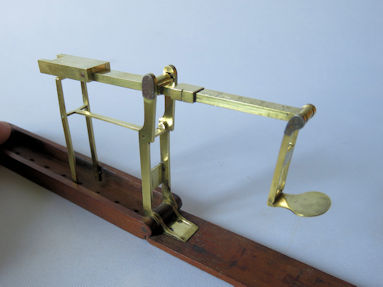
the coin scale is ready for use
|

ready to use
|

with a 1979 American dollar and 20 mg
|
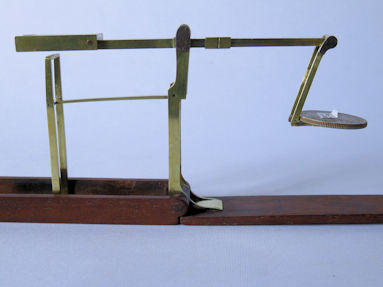
in balance and free from support
|

in equilibrium
|
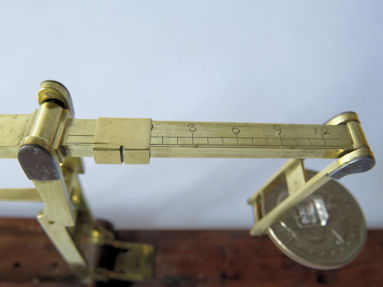
the slider is set to zero
|
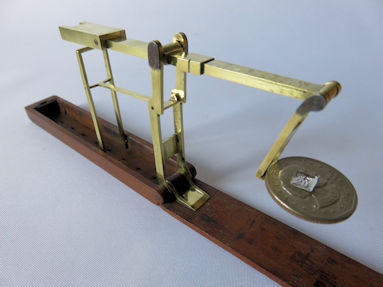
in balance and free from support
|
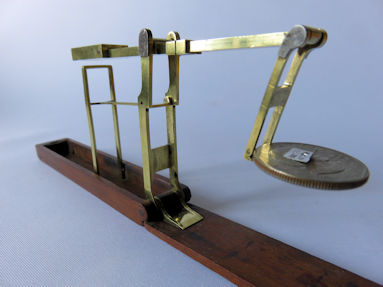
in balance and free from support
|
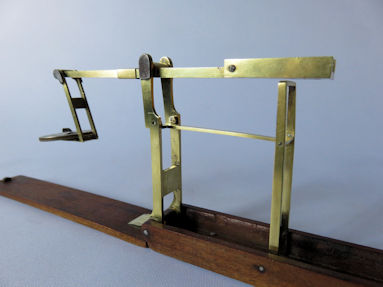
in balance and free from support
|
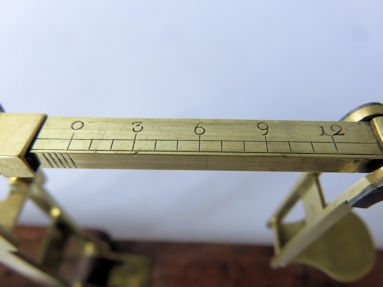
4 farthing to the left of 0 and to the right a scale up to 12 pence
|
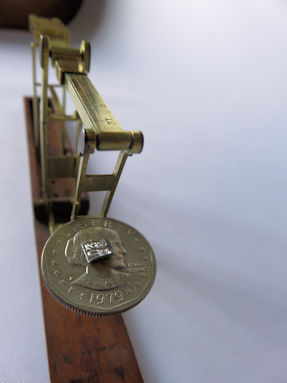
the 1979 US dollar with 20 mg
|

the other side of the US dollar and the 20 mg
|

the counterweight is unfolded when weighing 1 guinea
|
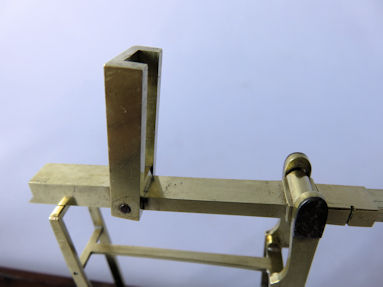
folding the counterweight
|
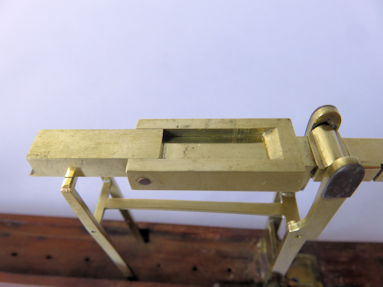
the counterweight is folded when weighing half a guinea
|
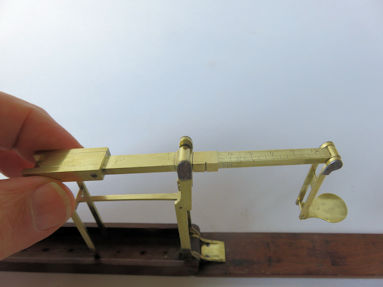
start of the folding
|
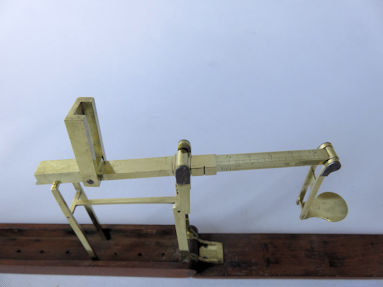
halfway through folding
|
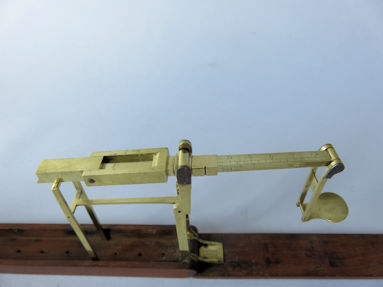
the counterweight is fully folded
|

the slider is set to zero penny
|
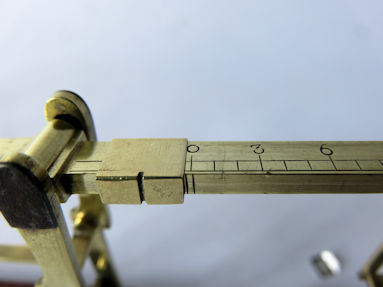
the slider is set at 1 farthing
|
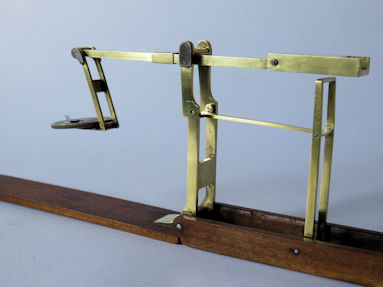
in equilibrium
|
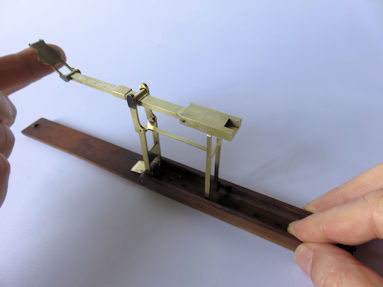
animation: before putting the scale back in the box,
it is first necessary to fold up the coin holder
[move the pointer over the photo] |

animation: then by closing the lid
the coin scale folds into the box
[move the pointer over the photo] |

animation: the coin scale is folded flat in the wooden box and
the lid is closed with a tiny click
[move the pointer over the photo] |
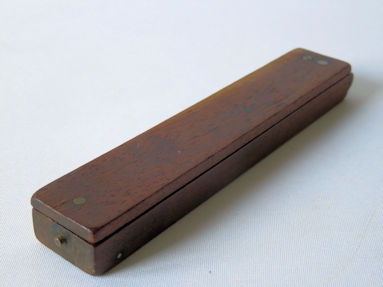
on the left the small control shaft to open the mahogany storage box
|
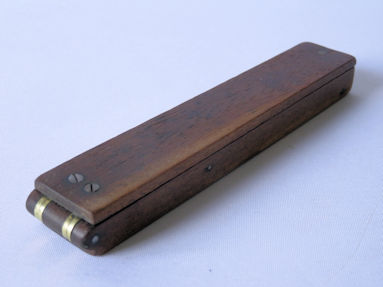
the well-constructed hinge
|
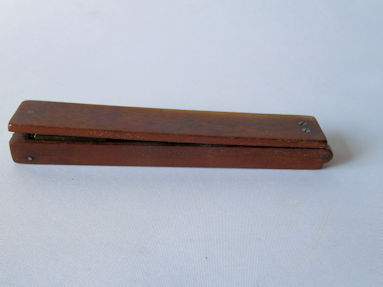
animation: after clicking it open, the lid is further opened and
the coin scale is started to be raised
[move the pointer over the photo] |

animation: completing the setting up of the scale
the coin holder is still folded
[move the pointer over the photo] |
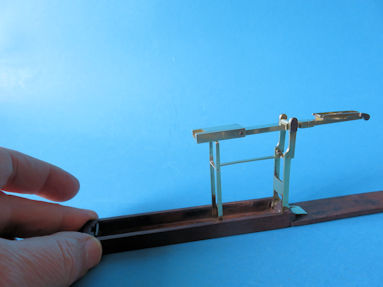
animation: bring the coin holder into the hanging position
by unfolding it upwards and the scale is ready for use
[move the pointer over the photo] |
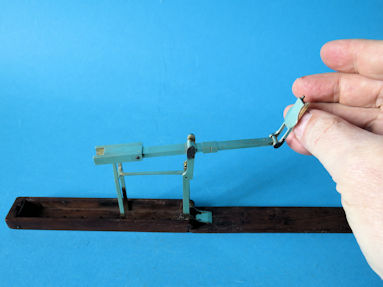
animation: before putting the scale back in the box,
it is first necessary to fold up the coin holder
[move the pointer over the photo] |

animation: the coin scale is folded here and
the lid can now be closed further
[move the pointer over the photo] |
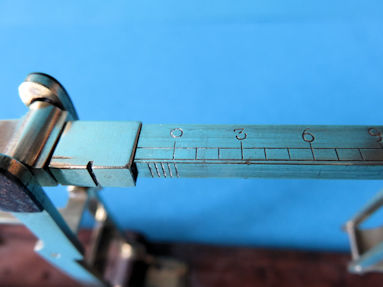
with the slider maximally to the left,
the 4 farthings scale is clearly visible
|

the brass strip provides the snapping force of the box closure
|

animation: demonstration of the maximum scale movement
with a few coins
[move the pointer over the photo] |
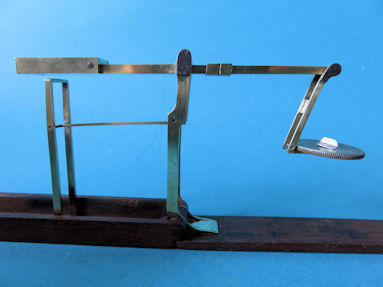
fully in balance
|
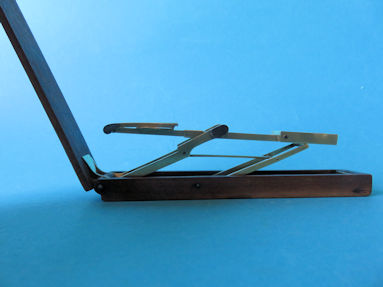
animation: storing the scale
by the closing movement of the lid
[move the pointer over the photo] |
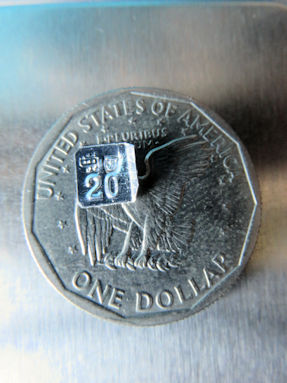
the US dollar with 20 mg
|
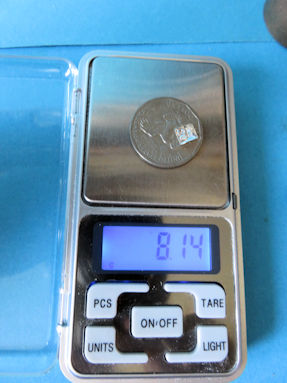
the weighing for checking
|
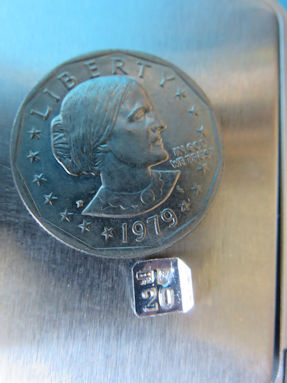
20 mg and the other side of the 1979 US dollar
|
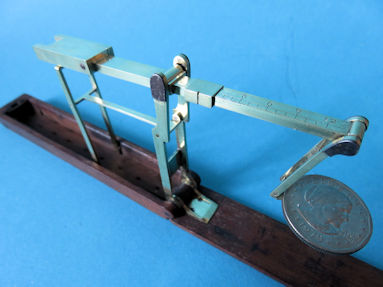
the dollar without extra weight does not move the scale
|

there is no movement
|
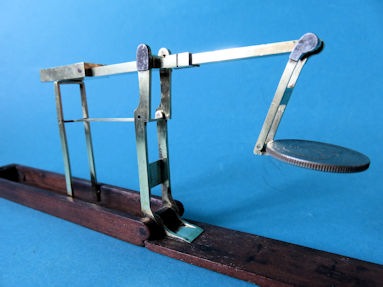
and the scale arm remains on the support
|
